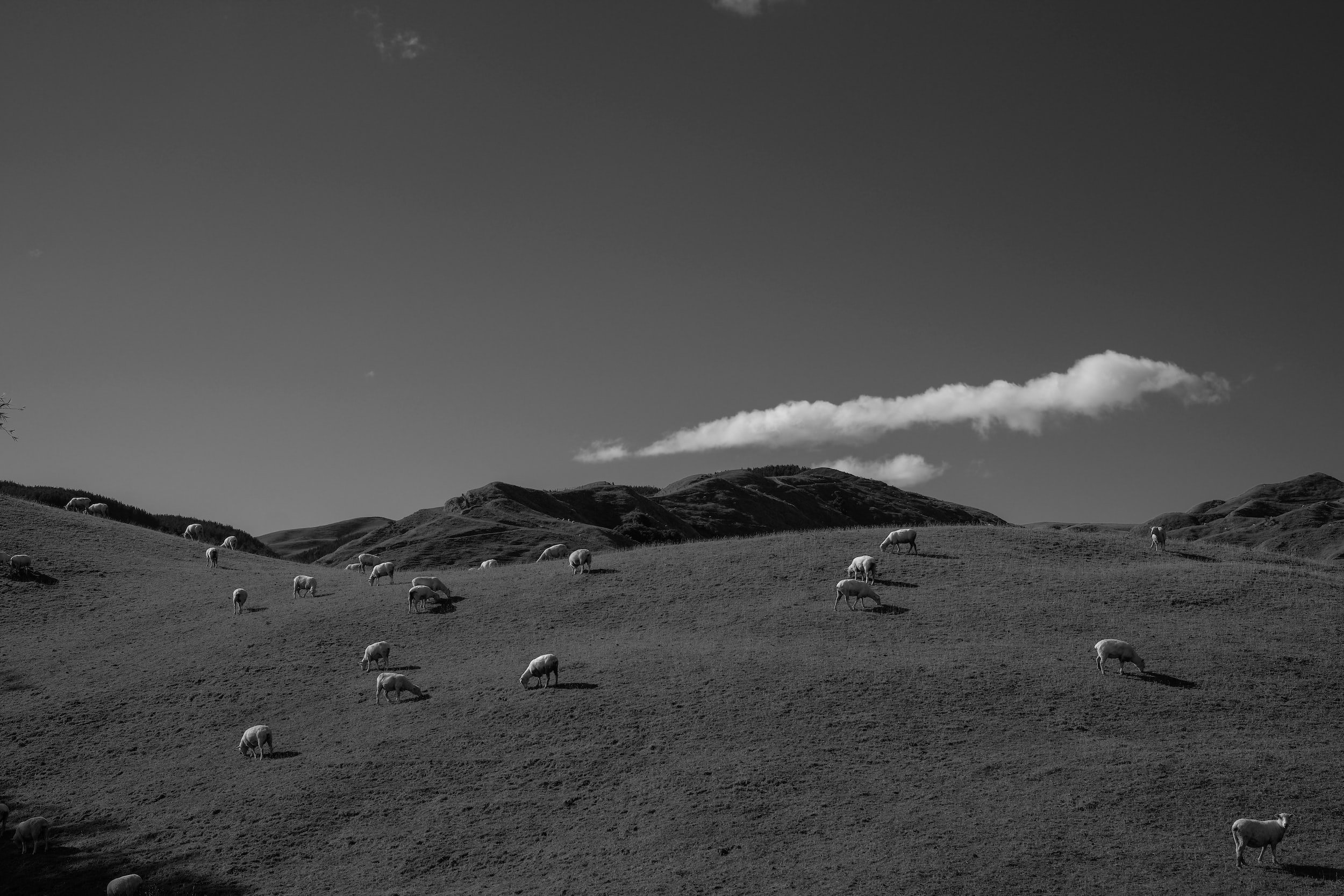
The Environmental Journey of our New Zealand Wool
At Maxwell Rodgers, we believe that sustainability and design excellence go hand in hand.
That's why we're proud to use New Zealand wool in our performance textiles.
Our Process
Wool has natural environmental benefits that make it the most environmentally friendly fiber. Each sheep produces enough wool yearly for approximately 8-10 meters of fabric, and the fiber itself is capable of neutralizing harmful volatile organic compounds (VOCs) emitted by plastics and synthetic fibers. In fact, the more wool in a room, the cleaner the air. Wool is also naturally flame resistant, making it a safe and sustainable choice for a wide range of applications.
Our commitment to sustainability starts right here on a typical New Zealand farm, where our mid-micron wools are sustainably sourced. From there, every step of the process, from spinning and weaving to dyeing and finishing, is carefully monitored to ensure that we're doing our part to protect the planet. We're even certified under the Responsible Wool Standard, so you can trust that our wool is traceable and sustainably sourced.
But our commitment to sustainability doesn't stop there. We understand the importance of reducing our carbon footprint, and we're constantly looking for ways to reduce our impact on the environment. From using renewable energy in our production processes to sourcing our wool locally, we're dedicated to creating performance textiles that are as good for the planet as they are for your space.
Sheep Shearing
We believe in treating our animals with care and respect. That's why the process of removing the wool from the sheep's back is carefully planned and executed to ensure the well-being of the animals.
Typically, the shearing process occurs once or twice a year, depending on the climate and what is best for the animals. In more temperate climate zones, electric clippers are used to carefully remove the wool, while shearers in New Zealand often use the Godfrey Bowen technique, in which the sheep is positioned to remain still for the entire 2-3 minute process.
While the fleece has value, our top priority is the health and happiness of the animals. That's why we take a holistic approach to animal husbandry, ensuring that our sheep are well-cared for and comfortable throughout the shearing process.
Wool Processing
Woolworks scour all the New Zealand Wool that are used in our textiles. Scouring is the first process after shearing that removes the seed and grease from the wool. Historically, this process was harmful to the environment, but Woolwork's operations take an environmentally conscious approach. Their ethos is to live and work in an environment that is in harmony with nature.
Scouring consumes a substantial amount of water, previously, scours were located near rivers, and waste was discharged directly into them. This is no longer the case. Water is processed and reused at a Woolworks scour, and this is monitored continuously. Similarly, with heating and the use of renewable energy. For example, dry waste such as seed matter is recycled into fertiliser.
Woolworks is also certified under the Responsible Wool Standard, and all wools can be traced back to the farm where they were grown.
After the wool has been scoured and cleaned, it is sent to Wellington, where it is transformed into yarn by Woolyarns. Woolyarns take pride in exceeding all regulatory requirements, particularly when it comes to protecting our water sources. All wastewater is treated to a high standard, ensuring that it can be safely returned to the aquifer.
From there, the yarn is brought to our facilities in Mt Wellington, Auckland, where it is woven into fabric and finished into the high-quality products that our customers have come to expect. Our factories employ over 300 skilled New Zealanders, and we're proud to support our local communities while bringing you the finest wool textiles on the market.
Wool Spinning/Weaving
This is more good news for the environment. Wool will deteriorate in a landfill – but there are also other options.
Our throws can be donated to a homeless shelter as there is ample life left in them. And similarly, our upholstery fabrics can be used by third parties once they are no longer appropriate to the original use.





